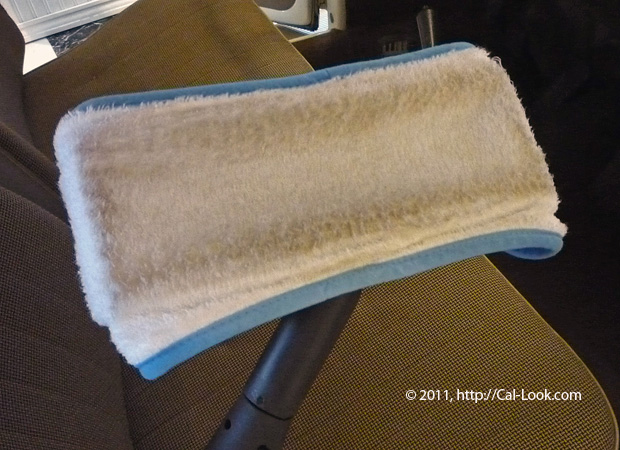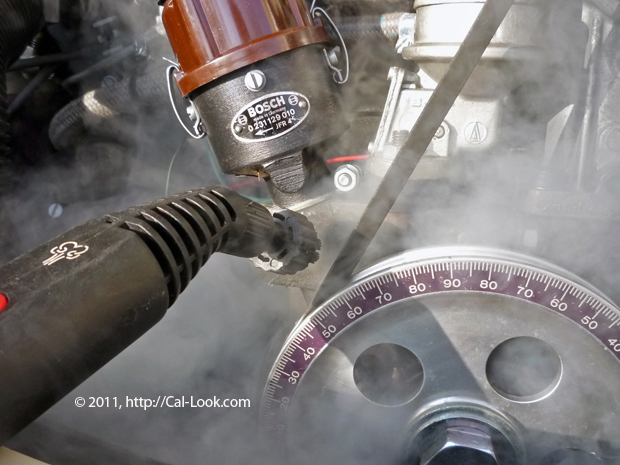
20 Apr Using Steam to Clean Your Car
Steam Cleaning
I first developed an obsession for automotive cleanliness 20 years ago while working at an air-cooled VW shop. Customers would bring in their VW Beetles, Ghias, Type IIIs and Buses for service covered in 20-30 years of grime. While the body and paint generally looked good, the areas that people do not see – engines, transmissions, brake drums and backing plates, etc. – were usually disgusting. I soon realized that I could not work on a car where the part(s) to be service were covered in grime. It became “noise” to me, like an annoying siren going off in my ear. After only a few minutes my hands, tools and the surrounding area were covered in oil, grease, dirt and rust. This became especially important when working on engines and brakes, as grit can ruin an engine and grease and oil can nullify a new brake job.
Prior to any service, I would therefore douse the part(s) in question with a number of cleaners, agitate them with brushes and rinse them with a strong hose. And then I would repeat the process. I can only imagine how many caustic, environmentally disastrous chemicals I rinsed into the ground water table. Let alone the chemicals that I inhaled, soaked into my skin, or the money we wasted on buying them. Thankfully, we’ve made progress in the last 20 years.
Heat + Pressure = Clean
A method of cleaning that has recently garnered a lot of attention with professional detailers is using steam. Many factors have contributed to its rise in use: high pressure water sprayers can get moisture in sensitive automotive electronics, water use restrictions, the banning of harsh (but effective) chemicals and simply reducing the amount of effort and time required. Steam cleaning is now being used to clean interiors, disinfect air-conditioning/heating vents, degrease engines and even wash entire cars.
With such promising PR, we decided to jump in and test a system for ourselves.
What to Look For
We undertook a lot of research prior to purchasing a steam cleaning unit, and several recommendations surfaced. The first was to stay away from inexpensive, small units, primarily aimed at consumers for use in their kitchens and bathrooms. The rationale was that:
1. They tend to not have adequate steam temperature (a minimum temperature at the tip of approximately 130˚ F) and high pressure are critical, as both are required to remove stubborn automotive oil and grease; and,
2. Steam cleaners have a reputation of poor durability, so buying the cheapest one you find may prove to be a false economy. Read consumer reviews and warranties prior to purchase.
While prices will vary by market, we found them ranging from $20 (U.S.) for a small unit to over $1500 for a professional one. After extensive research, we found an intermediate “heavy duty” version for $99, including shipping. The online research paid off, as prices for this identical unit ranged from $99 to $179 (plus shipping).
The unit arrived with several accessories, including various brush attachments and handle extensions. It also came equipped with a large storage tank, which provides approximately 1 hour of almost continuous use, an asset in the garage (versus constantly refilling and waiting for the water to heat up).
Techniques
We started out with the dirtiest part of a car, underneath the engine and transmission. Oil residue attracts road grime, which quickly becomes a filthy mess. For areas that were not too dirty, we simply applied the steam and wiped the dirt and oil off with a paper towel; no cleaners were needed. For areas with accumulated grime, we pre-soaked the area with a biodegradable cleaner, followed with the application of steam and wiping with a paper towel. We were amazed at how little work was required to make the bottom of the engine look new.
The transmission was by far the most challenging part of the car. Covered with 44 years of undercoating, paint, oil and grime, even a pressure washer could not clean it. The steam was very effective in removing the grime and softening the undercoating, followed by the use of cleaners, scrapers, brushes and more steam. This was a disgusting job, taking approximately 6 hours, but the result was worth it.
We then moved to the top of the engine, using the same technique: steam and wipe, spray cleaner (and agitate with brushes) where needed, followed by a steam rinse. The amazing thing was the steam nozzle’s ability to thoroughly clean behind areas where you would normally have trouble accessing, including the cooling vents beneath the rear window and behind the metal reinforcement strip on the inside of the decklid.
Moving to the interior, we switched attachments, adding the flat carpet/floor attachment with cloth. Our interior looked spotless prior to cleaning, yet two passes on the original seats pulled up a surprising amount of dirt. This was despite the fact that we had vacuumed the interior and used no cleaners on the seats; the steam had simply done the work. Not having to resort to a scrub brush and chemicals on a 43 year-old, original interior was tremendous.
Things to Keep in Mind
It is important to read the manufacturer’s instructions when using a steam cleaner. A few reminders are worth noting:
– The steam is incredibly hot, and it is very easy to get a severe burn if you are not paying attention. A moment of inattention during our initial use caused a minor burn on the fore arm.
– If you buy a heavy duty version that produces high pressure, you should wear ear protection in enclosed spaces – for example, under the car – as there is a lot of noise. Eye protection must also be worn.
– While our unit came with auxiliary brushes to attach to the tip, they can quickly wear down with heavy use, so using a separate set of hand held brushes (that are easily replaceable) is recommended.
– While we noticed a dramatic reduction in the amount of chemicals needed, you will still need to use some, as noted. It is important that you select chemicals that are compatible with the surface you are cleaning (magnesium, carpets, seats, etc.).
– Do not use tap water in your steam machine, as the minerals will damage it. Distilled water is recommended.
– Due to the high temperature, you should be very careful around plastic, as the steam can warp it.
Steam Cleaning Unit
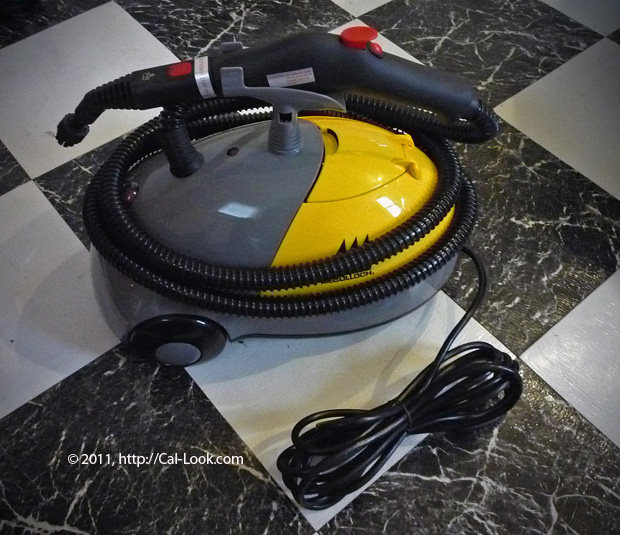
Typical oil residue on sump, push rod tube protectors and heat exchanger
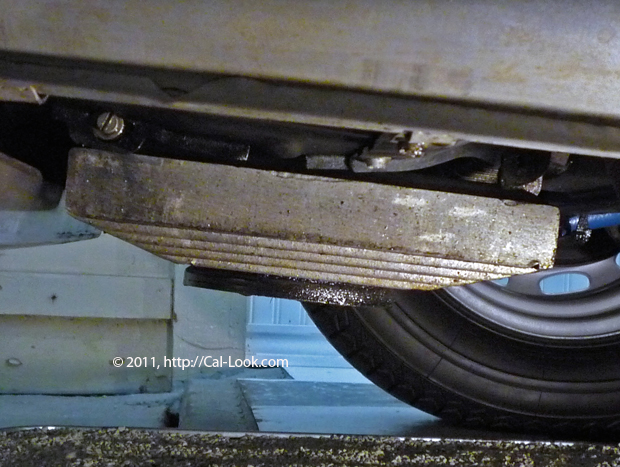
After one pass with the steam cleaner and no chemicals, the oil easily wiped off, leaving no residue
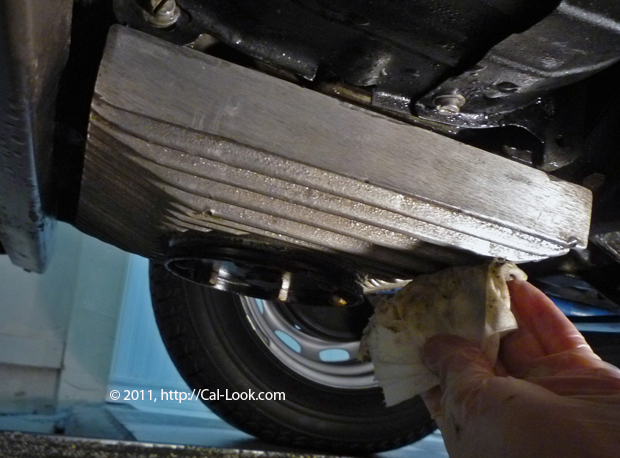
After only 10 minutes of use, the bottom of the engine was clean
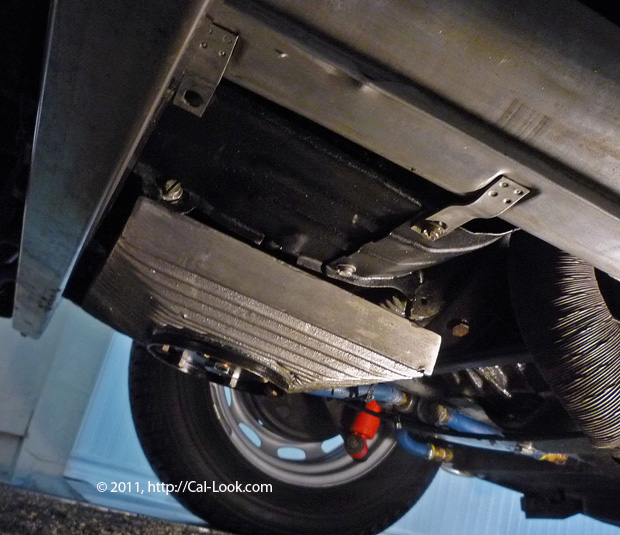
44 years of road grime on the transmission
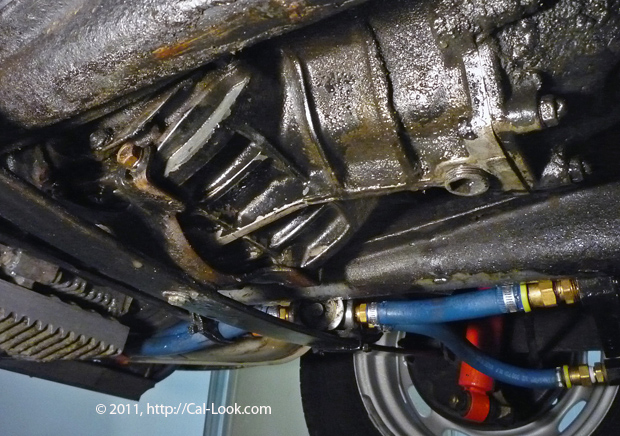
6 hours later, using steam, brushes and cleaners, it looked new
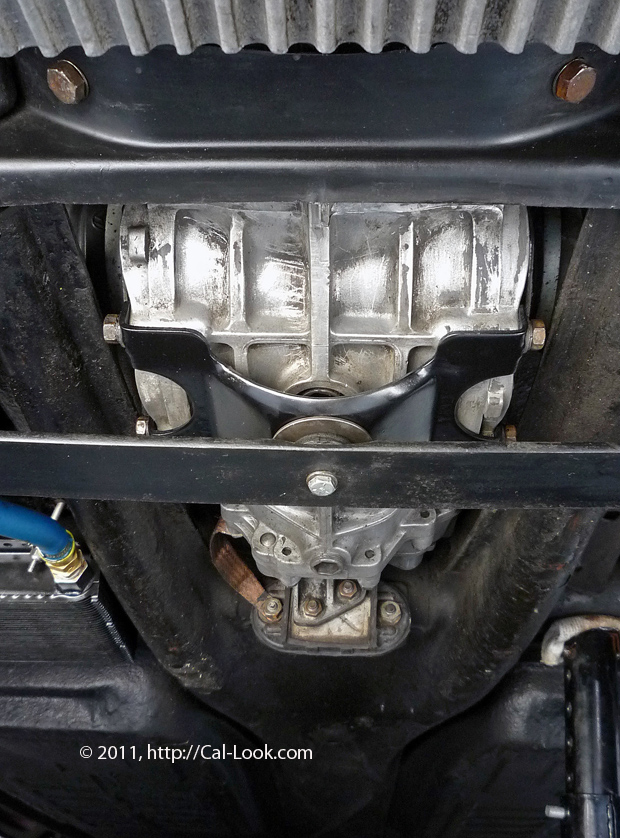
Oil residue on topside of engine case

Applying the steam
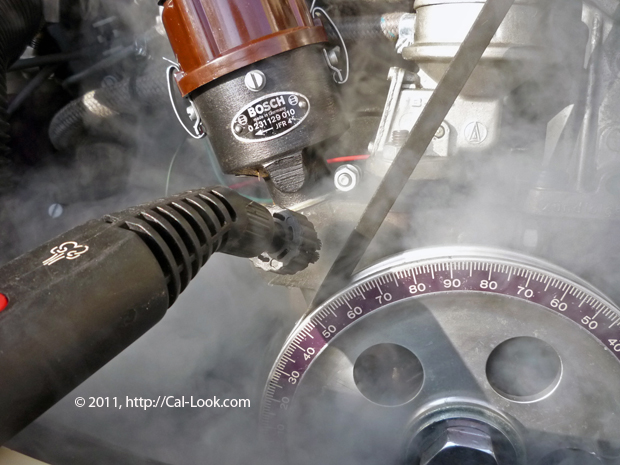
Brushes and biodegradable cleaner were used to agitate the dirtier parts of the engine. Note bag over carburetor to keep moisture out during final low-pressure rinse with a hose

Engine case is spotless after only a few minutes with the steam cleaner

Steam cleaner was especially helpful in cleaning around the decklid hinges, spring and behind the reinforcement metal
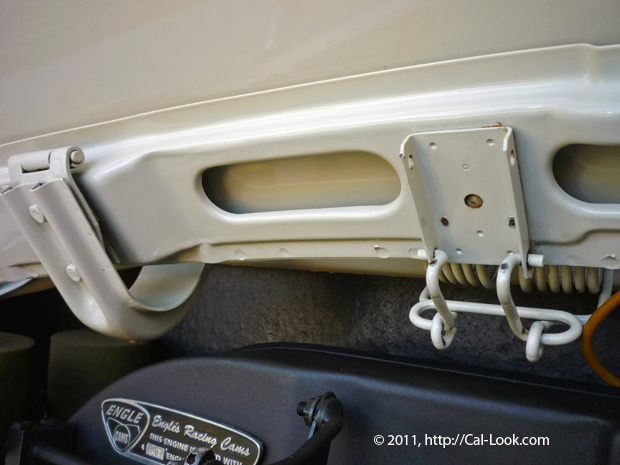
After only a few minutes of use, the original paint looks brand new. You can be a lot more precise than simply blasting with a garden hose
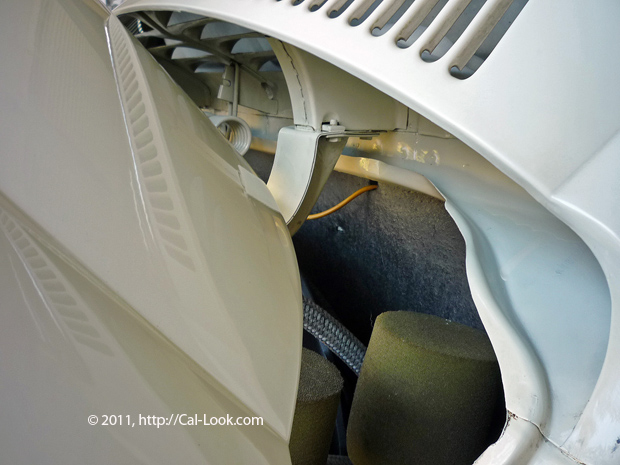
Applying steam to original interior
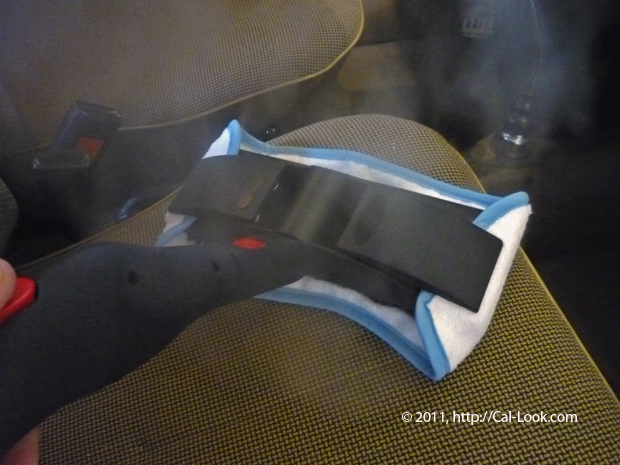
And we thought it was clean – this was after two passes with no chemicals!
